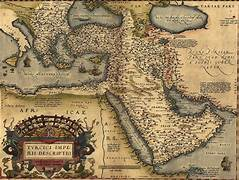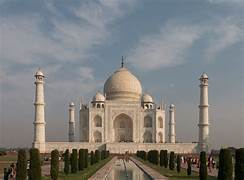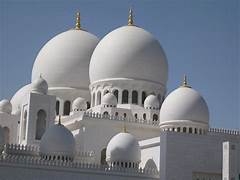ARCHITECTURAL TAPESTRY : A GLOBAL COMPARISON
Architectural tapestry can refer to the use of textiles and woven art within architectural spaces or the metaphorical integration of different architectural styles and elements within a structure. In the context of global comparisons, both interpretations are relevant.
1. Literal Architectural Tapestry (Textiles in Architecture)
Historical and Cultural Use of Tapestries in Architecture: Tapestries have been used historically across various cultures, often serving as decorative, functional, and symbolic elements in architectural design. Here's a global comparison of their application:
Europe (Medieval and Renaissance):
.France and Flanders: Famous for the production of large-scale, intricate tapestries, such as those produced in Aubusson or the "Lady and the Unicorn" tapestries. These were often used to insulate the cold walls of castles and palaces and also to depict historical and religious scenes, reflecting both the architecture and the cultural narratives of the time.
.England: The Bayeux Tapestry (technically an embroidery) depicts the events leading up to the Norman conquest of England, blending textile art with the telling of history and politics. These tapestries were often hung in churches and castles.
BAYEUX TAPESTRY D-DAY HISTORY
Middle East and Islamic Cultures:
.Persian Safavid Tapestries: Renowned for fine carpets and woven tapestries, Persian architecture often incorporated tapestries and textiles that echoed the intricate geometric patterns and rich ornamentation found in their buildings. Textiles were seen as an extension of architectural art, often used to soften the spaces of monumental stonework.
.Ottoman Empire: Similarly, in Ottoman architecture, tapestries and carpets adorned palaces and mosques, with the detailed patterns echoing the aesthetics of Islamic architecture—minarets, domes, and calligraphy.
Ottoman EmpireEast Asia (China and Japan):
.China: Tapestries and silk hangings were used extensively in palatial and religious architecture, with the intricate patterns reflecting nature and mythology. These textiles were integral to the harmony of Feng Shui and interior aesthetics.
.Japan: In traditional Japanese interiors, textile screens, curtains, and hangings were used to divide spaces, particularly in temples and palaces. The emphasis was on natural materials and subdued elegance, much like the architecture itself.
Africa:
.West African Textiles: In some African cultures, particularly in regions like Mali or Ghana, woven textiles like Kente
cloth or Mudcloth were historically used in ceremonial architecture or royal palaces. The symbolic meaning of these textiles was often linked to power, social status, and community history.
Latin America:
Andean Civilizations: Inca and pre-Columbian civilizations wove intricate textiles that were highly valued and used in ceremonial spaces and burial sites. These were linked to both architectural design and cosmology, integrating sacred geometry found in their temples.
2. Metaphorical Architectural Tapestry (Interwoven Architectural Styles)
Architecture as a "tapestry" can also refer to the blend of different styles, influences, and historical periods within a single structure or across a region. Here’s a global comparison of how architectural tapestries develop in various cultures:
Europe:
.Gothic and Renaissance: European cities often demonstrate a blending of medieval Gothic architecture and Renaissance classical principles. For instance, Florence and Paris show how older Gothic cathedrals coexist with more symmetrical and proportionate Renaissance designs. The shift from pointed arches to domes and columns creates an architectural tapestry of different periods.
India:
Mughal and Hindu Architecture: Indian architecture is a tapestry of Mughal and traditional Hindu elements. The Taj
Mahal combines Persian Islamic influences with Indian ornamentation, while older Hindu temples exhibit intricate stone carvings and domes. The combination of these two major traditions over centuries creates a unique architectural language.
China:
.Ancient and Modern Skyscrapers: Chinese cities, especially Beijing and Shanghai, illustrate a dramatic tapestry of ancient palaces and temples (like the
Forbidden City) alongside hyper-modern skyscrapers and innovative structures. The juxtaposition of traditional Chinese rooflines and contemporary glass-and-steel construction forms a visual tapestry of old and new.
Middle East:
Islamic and Modernist Architecture: Cities like Dubai and Abu Dhabi present a juxtaposition of modern architectural feats, such as the Burj Khalifa, against traditional Islamic architecture, such as mosques and palaces. The interweaving of ornamentation, calligraphy, and contemporary minimalism forms a striking visual tapestry in these cities.
Africa:
.Vernacular and Contemporary Designs: African architecture often blends traditional vernacular designs—such as the mud-brick structures of Mali or the stone structures of Zimbabwe—with modernist and contemporary forms. In places like South Africa, you see the fusion of colonial, indigenous, and contemporary architectural traditions in cities like Johannesburg or Cape Town.
North America:
.Colonial and Modernist Architecture: The architectural tapestry in cities like New York or Los Angeles consists of colonial Spanish and English influences, alongside modernist movements. Skyscrapers like the Empire State Building or One World Trade Center rise above older buildings, blending Art Deco, Gothic Revival, and Postmodern designs.
Southeast Asia:
.Colonial and Indigenous Architecture: In regions like Singapore or Vietnam, there is a strong tapestry of British or French colonial influences blended with local traditions. This creates a blend of colonial-era buildings with pagodas and indigenous structures.
Conclusion:The concept of architectural tapestry, whether through literal textiles or metaphorical interweaving of styles, reflects the complexity and diversity of global architectural traditions. It’s a powerful metaphor for how history, culture, technology, and aesthetics are woven together, creating a unique architectural identity in each region. Whether through Persian carpets adorning mosques or the fusion of Gothic spires with modern glass towers, architecture worldwide can be seen as a rich, layered tapestry.























![Terry Farrell [ British architect]](https://blogger.googleusercontent.com/img/b/R29vZ2xl/AVvXsEgF5Bc7-F6oyGHwVlcJfUVoN9PAph8ZIAQAVTMDZ0oOX0kIENEGN84Arj8wxKS666_yV2hRHMM4zlJ5gCJFBA1ttvrGBPrCNY0tZWfcuPl0aolt_szKpBjWtbLYutI4ivHBLrzZkj-wEk_l_1paoEEVkgnzCt7yvpHoDkhm63TxHxL45GUgV2OZVkwLYkWG/w100/11e81b6d-862f-4a23-a2d0-950d22063de0.png)



0 Comments